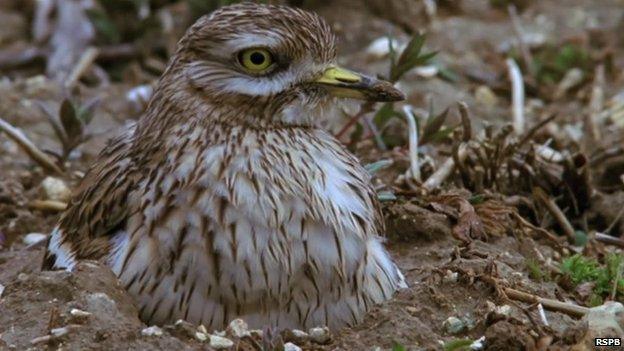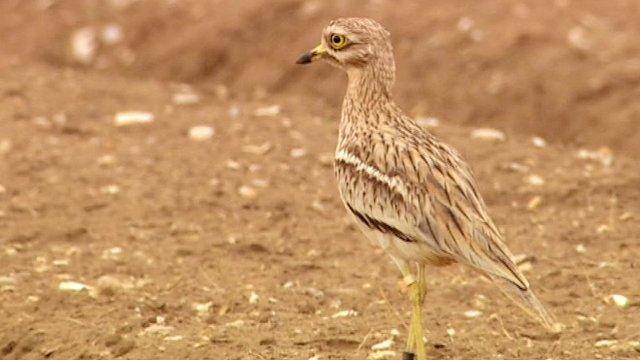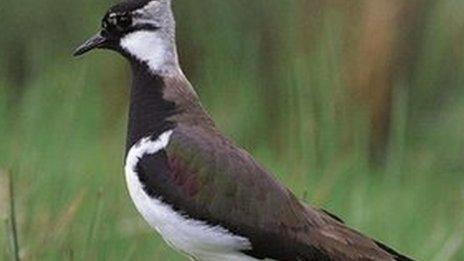Breckland stone curlew 'winning 30-year survival fight'
- Published

Farmers have recreated the breeding habitat at 120 sites across the Brecklands
A bird that was on the road to extinction in its native habitat in the Brecklands of Norfolk and Suffolk is thriving after 30 years of care.
Farmers, conservationists and the RSPB have worked together to preserve the breeding habitat in fields that has helped the stone curlew survive.
The birds, which winter in Africa, return to Breckland farms in April.
Fields have been specially ploughed for birds to get at worms and insects while plants that attract them line edges.
Those involved in the conservation programme met in Thetford on Friday to celebrate and welcome the arrival back of the birds.
Breeding pair numbers have almost trebled and the RSPB has described the project as pioneering.

Stone curlew
Crow-sized bird with a large head, long yellow legs and relatively long wings and tail
Active at night its large yellow eyes enable it to locate food in the dark
Unrelated to curlews, it gets its name from its curlew like call
Likes dry, open places with bare, stony ground and very short vegetation found in the Brecklands of Norfolk and Suffolk
Best viewed at Weeting Heath in Norfolk, where the Norfolk Wildlife Trust has established visitor and viewing facilities
Source: RSPB

- Published11 April 2013

- Published10 April 2013

- Published18 October 2012
